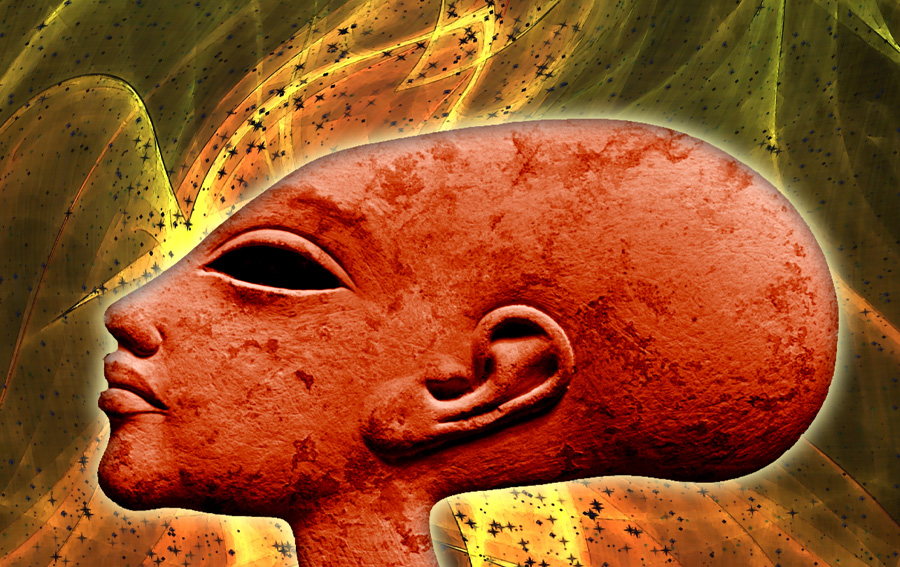
To start with. i am going to call this a cult. It had hot spots around the world, but its globalization coincides with globalization of the Atlantean global copper based economy around 5000 years ago.
Archeology needs to pay serious attention to this because it is as obvious as the Pyramids and a certain indicator of comms. so far it has all been loudly ignored. A little like digging for pleistocene artifacts beside the Pyramids.
First off though, skull elongation on a human skull does nothing to change the contained volume. We may have larger volumes from recovered human giants, but those are also separate as well. For all that it is reasonable that this cult was inpired by an non human race sporting larger heads. Such a presence also explains its survival against all common sense. There is a good reason we do nothing like it.
The Starchild skull is our best known example of that alien species, including alien DNA and a reasonable inspiration. We may also have others out there as well, but again archeology has to bite the bullet and put this all together.
Enigma of the Long Skulls
Posted on January 17, 2023 by AReditorialDept
https://atlantisrising.com/2023/01/17/enigma-of-the-long-skulls-2/
Societies around the world portray distinct characteristics that define the language spoken, and the customs and traditions that are passed from generation to generation, each of these can provide insights into a cultural group. There are, however, a number of universal customs that are practiced on each continent around the globe. They include circumcision, death and burial rituals, and cranial deformation. These traditions originated in our remote past, their purpose and meaning seemingly lost to the sands of time.
It was once believed that head modifications developed in Egypt and then spread around the world. Researchers have concluded that this phenomenon was not isolated to one geographic area and then disseminated out into the surrounding areas. Instead, this bizarre hallmark of ancient societies sprang up around the world in different cultural groups independently. Many have come to believe it to be an inherent step in the evolution of a group’s culture.
Cranial deformation is a distinct and painful tradition. The objective of cranial deformation is to elongate the shape of the head. This procedure, once performed, cannot be reversed. More importantly, individuals who have had the procedure performed, unlike circumcision, cannot conceal it. It is a permanent visible marker that identifies not only a cultural group but also select individuals within that society. When a child is born, the infant’s head is fashioned or molded into a unique long and slender shape. The simplest method a caregiver employed was to put pressure on, or gently massage, the child’s head daily until the desired shape was achieved. The second method constrained the child’s head in a mechanical device, which, over time, would produce the desired elongated shape. Head modifications were always performed during infancy, when the cranial bones were still tender and pliable and the sutures between the cranial bones are unfixed. This allowed shaping or reshaping the head. But why would a mother or caregiver subject her child to such a painful and ongoing process?
Skulls displaying clear signs of cranial deformation surfaced in the archaeological record of the early Neolithic Era starting around 10,000 BCE. The practice of head modifications during the Neolithic era (prior to 5000 BCE) appears episodic. This may be due to the number of individuals whose heads were modified, or, could be tied to the limited number of remains that have been unearthed. Some of the earliest examples of elongated skulls discovered were unearthed in southeastern Australia in Coobool Creek and Kow Swamp. Remarkably, finds that date to about the same time were also found in the Shanidar Cave in Iraq. In the eastern highlands of Brazil, a skull was recovered from Confins Cave that dates back to 7566 BCE.
Starting around 5000 BCE, the tradition of skull modification appears to have expanded. This assumption is based upon the increased number of remains with elongated skulls recovered. Some researchers believe that the convention of cranial manipulation mushroomed as early hunter-gatherer societies began to coalesce into urban environments. Figurines with deformed crania also begin to appear in the archaeological record, further supporting the antiquity and distribution of this custom.
In the modern world, the tradition of cranial deformation is often associated with ancient indigenous cultures and not with advanced western civilizations. If it was practiced in the Western world, one might assume that it occurred sometime in our remote past
The elongated skulls of Peru were not entirely human: different numbers of cranial bones and a different head volume prove that. N YouTube Antlean Gardens, Timothy Alberino and many more have videos which show the distinct differences. In addition, cultures globally (China, Ireland, the Vatican, Peru, Ethiopia, Egypt, England, etc.) all have high ranking priests and officials wearing tall hats which would conceal elongated skulls. Weird that it is not discussed openly because the paintings, artifacts snd skulls prove this without a spoken word—this is an incontrovertible pattern globally.
ReplyDelete